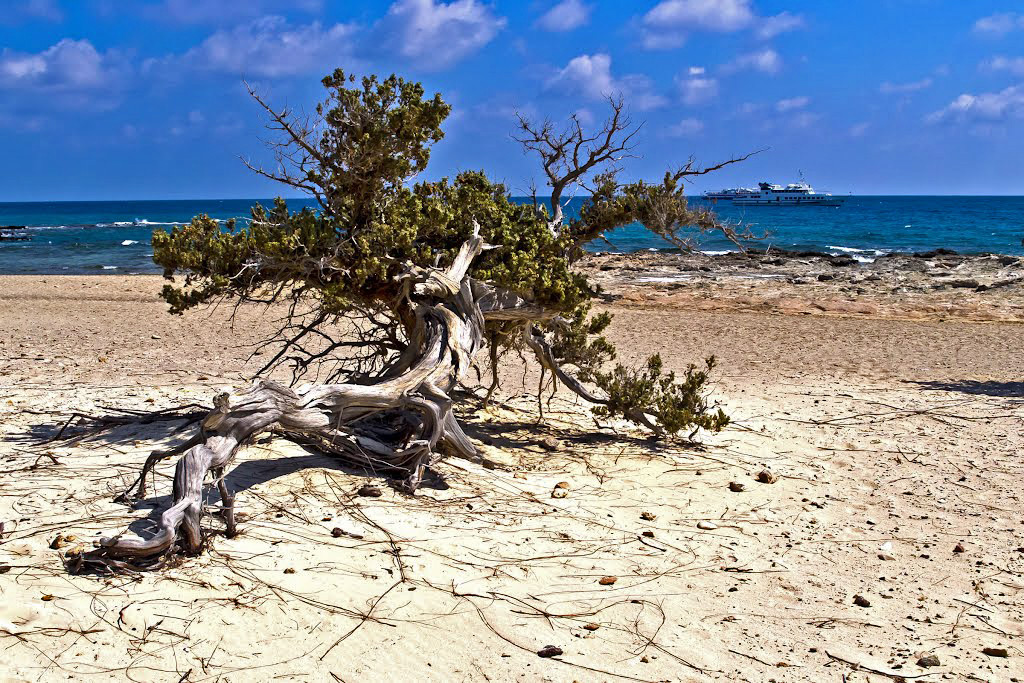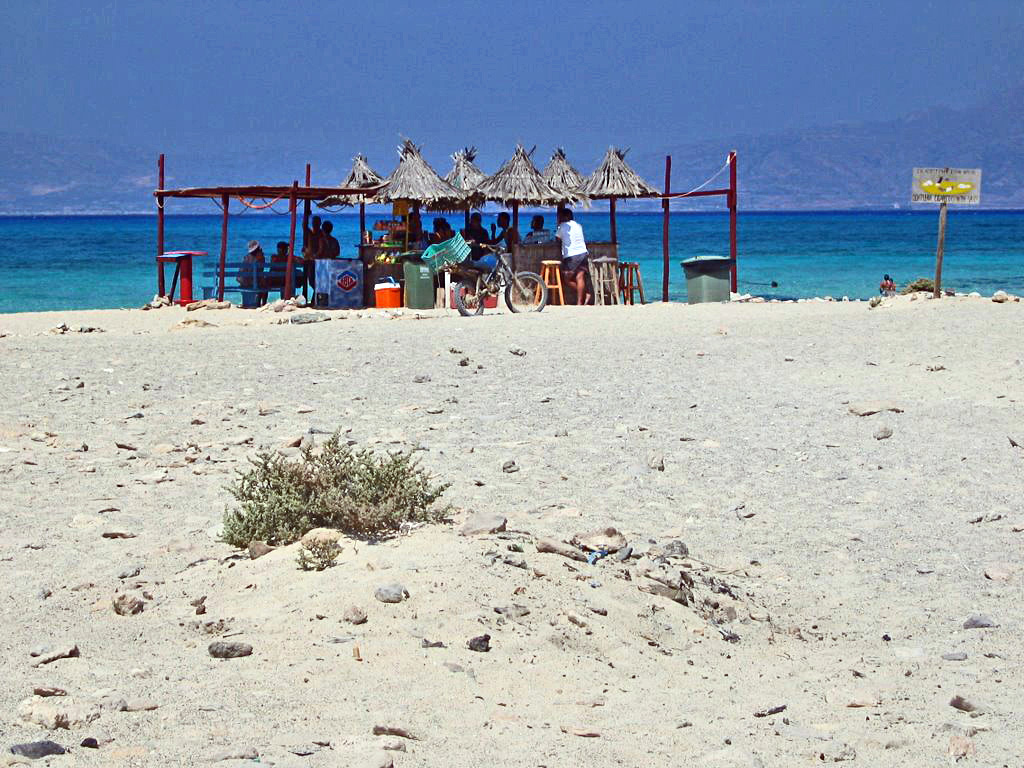This (Golden or the Isle of Donkeys) is some 5 km long by 1 wide: its highest point (Kefala) is but 31 m above sea-level.
Uninhabited, it is very lovely with beaches appropriate to Paradise. The general impression a visitor receives is that he is on some exotic south-sea island!
The beaches have white and golden sands, coloured pink from crushed seashells that are strewn far and wide. The waters are crystalline and translucent with a turquoise colouring.
On Chrysi there survives a large cedar forest, of some 85 acres extent, with large and impressive specimens. All the island is part of the European Community’s network of protected landscapes of natural beauty – NATURA 2000, and also guarded by Greek legislation. 49 species of fossil have been identified in the volcanic rocks that make up a part of the island.
At the time of the Byzantine Empire, Chrysi was an important centre for the production of salt and purple dye.
. At the west of the island is the church of Aghios Nikolaos, worth a visit; also a salt lake, Roman chamber tombs and the lighthouse and breakwater of the ancient harbourworks.
Camping is forbidden on Chrysi, as is entering the cedar wood which is fenced off in places. Collecting sand and shells is likewise not allowed.

To get to the island, ferries run daily from Ierapetra – from mid-May to late October. The journey takes a little over an hour, and the boat will put in to a small harbour on the south beach, at Vougiou Mati, There is a taverna there.
Alongside this landing spot is the South Beach, which has golden sand and shallow clear water: in addition to the umbrellas, you will find several cedars in whose shade to relax.
From the South beach a path winds its way through the sand-dunes and crosses the island, leading to the beaches of Belegrina, Hatzivolakas and Kataprosopo.
5 minutes walk away from the South beach and the harbour is Belegrina (or Chrysi Ammos .. Golden Sands) on the north side: it is the most popular on Chrysi.
A most attractive place, with its white sand, the broken remains of the shells in it and shallow blue-green and crystal-clear waters. It really does feel like some exotic location! Here are some umbrellas and a canteen.
East of Belegrina is Kataprosopo. Its name (Face to face) comes from its location as it lies directly opposite an even smaller islet (Micronisi, some35 acres in size) that is a mere 700 m offshore. As a beach, with small pebbles and blue crystalline waters, it is less impressive that the others on the north coast, which are prettier and more crowded.
West of Belegrina is a calmer beach – Hatzivolakas: quite a rocky place, it has some white sands and shallow turquoise and clear waters; on every side the towering cedars stretch out their shadows for the visitor.














